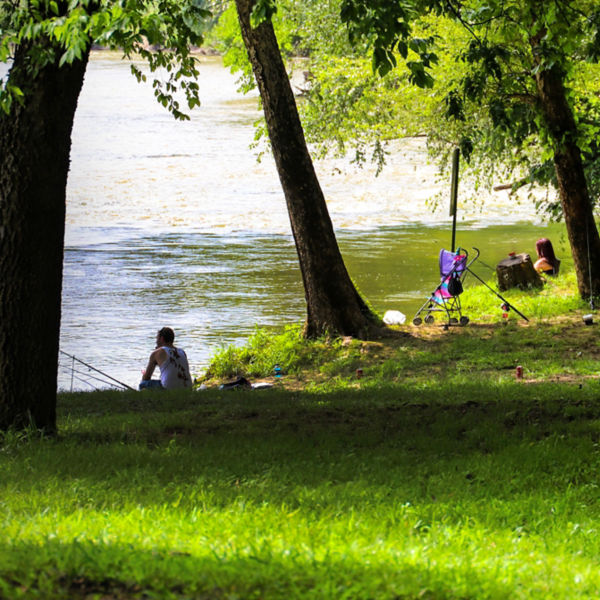
Great Smoky Mountains National Park is the most-visited national park in the country. It’s a popular place, sure, but hikers can spread out among some 150 trails in the park during all seasons of the year. There’s really no bad time to head to the park, with spring offering wildflowers, summer giving way to roaring waterfalls, autumn yielding the changing colors, and winter opening up new vistas typically blocked by leaves. That being said, there are a number of very popular trails in the park. A couple even made this list, included in the interest of offering the best option for every type of hiker, from families and those needing accessible trails, to experts craving more strenuous outings (likely to be less crowded than the usual suspects).
Best Family Hike
Porters Creek Trail
Trailhead: Greenbriar Cove (6 miles east of Gatlinburg, Tenn.)
Mileage: 2 miles round-trip
Elevation Gain: 350 feet
Take a mellow, 1-mile walk through hardwood forest and along the bucolic Porters Creek to Porters Flat. It’s a nice leg-stretcher, or introduction to hiking for younger kids, and there’s a historical element to engage them with, too: There’s a barn, cabin, and remnants of a cemetery from the bustling community of 500 European settlers who lived in the area in the late 1700s. In the spring, this area comes to life with wildflowers, becoming free of snow and ice much earlier than the higher-elevation trails.
Best Accessible Hike
Gatlinburg Trail
Trailhead: Sugarlands Visitor Center
Mileage: 3.9 miles round-trip
Elevation Gain: 164’
This is a popular trail that’s open year-round and also one of two trails in the park that allow leashed dogs. Running along the West Prong of the Little Pigeon River, the flat trail offers nice views of the water. Visitors can park in one of six accessible spaces (all are van-accessible). The trail itself is dirt, gravel, or pavement and is at least 4 feet wide in most places. The first 1.2 miles is the most accessible section (a grade of 5% or less), as there’s a bridge over the Little Pigeon with over a 2-inch gap from the trail to the bridge.
Best Waterfall Hike
Hen Wallow Falls
Trailhead: Cosby Picnic Area/Gabes Mountain Trail
Mileage: 4.4 miles round-trip
Elevation Gain: 900’
The park is known for its many waterfalls and they’re (rightfully) popular hiking destinations. Over 200,000 people hike to the heavy-hitters (Grotto, Laurel, and Rainbow), but there are more than 2,000 miles of streams in the Smokies and numerous waterfalls within the park. The hike to the 90-foot-tall Hen Wallow Falls meanders through hemlock and rhododendron forest. The final jaunt to the base of the falls follows steep switchbacks, and in the coldest winter temps, the falls can often freeze into a stunning pinnacle of ice. Continue on Gabes Mountain Trail beyond the falls to immerse yourself in a beautiful old-growth forest.

































